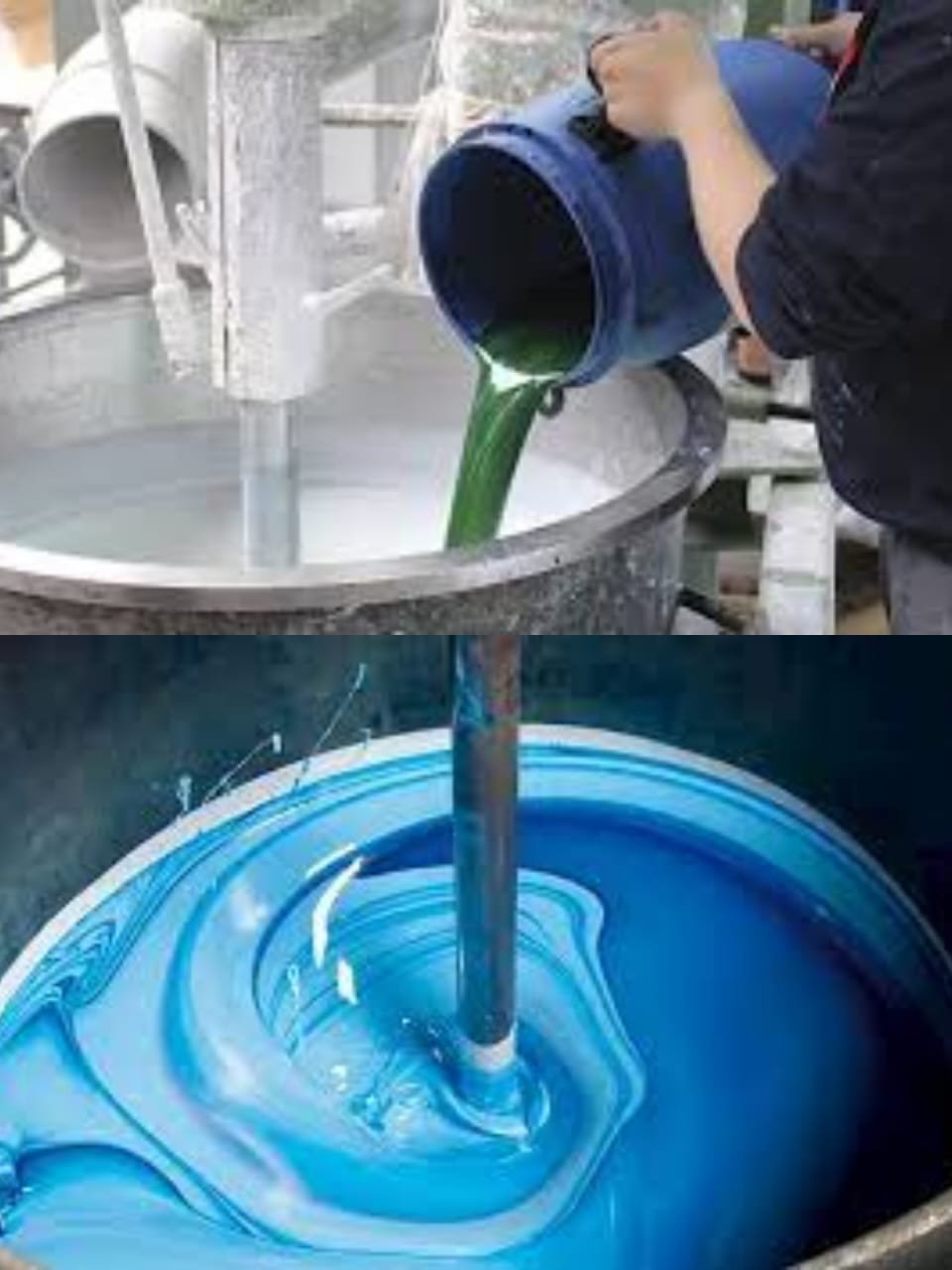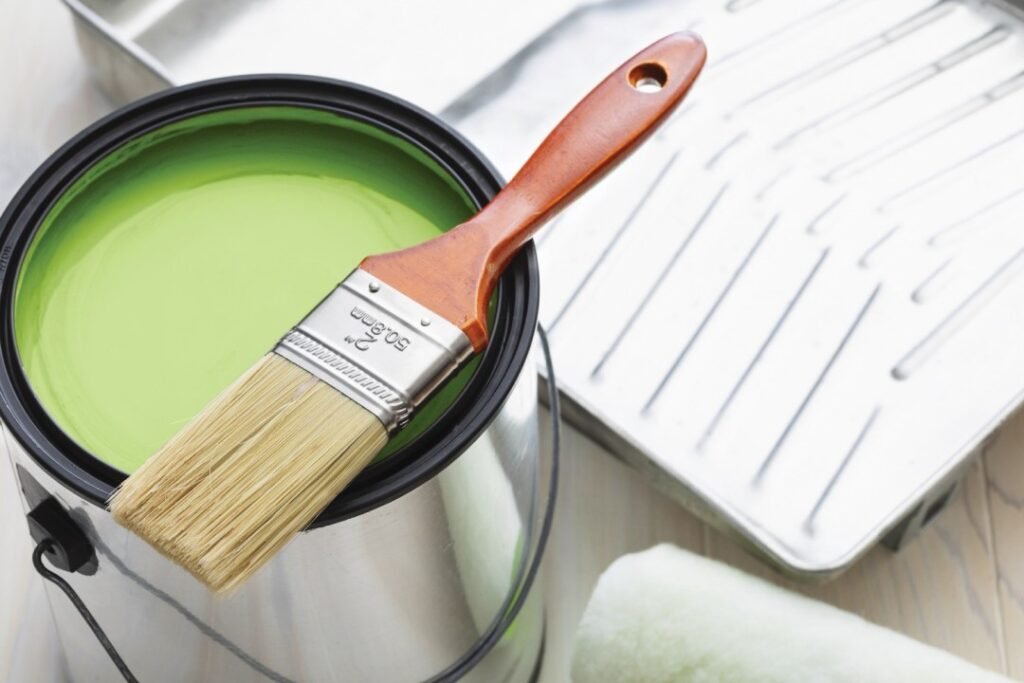Introduction to Mithila Paints
Mithila Paints, a trailblazer in the eco-friendly paint industry, has set remarkable standards for sustainability since its inception. Founded in the early 1990s, the company emerged from the vision of a group of environmentally conscious entrepreneurs who aimed to revolutionize the paint sector with green alternatives. The founders of Mithila Paints were determined to reduce the harmful impact of traditional paints on the environment and human health.
Driven by a mission to foster sustainable practices, Mithila Paints has consistently emphasized the importance of utilizing renewable resources and minimizing ecological footprints. Over the years, the company’s unwavering dedication to environmental stewardship has allowed it to expand and innovate continually. Their journey has been characterized by strong commitments to research and development, leading to the creation of various eco-friendly products that cater to both residential and industrial needs.
One of the core philosophies of Mithila Paints revolves around producing non-toxic, biodegradable paints that do not compromise on quality or performance. Their product line ranges from decorative wall paints to specialized coatings, all designed with sustainability in mind. By employing natural ingredients and cutting-edge technologies, Mithila Paints has managed to deliver products that ensure a healthier living environment while also safeguarding the planet.
The company’s dedication goes beyond manufacturing eco-friendly products; it also extends to educational initiatives aimed at raising awareness about the importance of green solutions in the paint industry. Through community outreach programs, partnerships with environmental organizations, and active participation in sustainability conferences, Mithila Paints strives to inspire a broader commitment to ecological responsibility within the industry.
Today, Mithila Paints stands as a testament to how businesses can thrive by aligning their operations with environmental values. Their success story exemplifies the potential of eco-friendly innovation to drive growth and build a loyal customer base while promoting a sustainable future.
The Importance of Eco-Friendly Paints
The shift towards eco-friendly paints marks a significant advancement in the effort to reduce environmental impact and enhance human health. Traditional paints often contain a notable amount of volatile organic compounds (VOCs) and other harmful chemicals. These substances are known for their detrimental effects, contributing to air pollution and posing various health risks. Prolonged exposure to VOCs can lead to respiratory issues, headaches, dizziness, and, in severe cases, chronic illnesses. With building materials already contributing to indoor pollution, adding traditional paints to the mix exacerbates the problem.
Eco-friendly paints, however, offer a sustainable alternative by significantly lowering or completely eliminating the presence of VOCs. These paints are formulated with natural ingredients and minimal synthetic additives. This makes them a safer option, particularly for vulnerable populations such as children, the elderly, and those with pre-existing health conditions. Furthermore, the use of eco-friendly paints contributes to better indoor air quality, providing a healthier living environment.
In addition to health benefits, eco-friendly paints have a reduced environmental footprint. The production process of traditional paints typically involves the release of harmful pollutants into the air and water. Conversely, the manufacturing of eco-friendly paints prioritizes the use of renewable resources and biodegradable materials. By choosing eco-friendly options, consumers can substantially decrease their environmental impact, promoting sustainability and conservation of natural resources.
Moreover, many eco-friendly paints are manufactured using innovative methods to ensure they are as durable and effective as their conventional counterparts. This eliminates the need for frequent repainting, thus reducing overall consumption and waste. Taking all these factors into account, it is clear that the adoption of eco-friendly paints is not merely an eco-conscious choice but a necessary step towards preserving the environment and safeguarding human health for future generations.

Materials and Ingredients Used
Mithila Paints has carved a niche in the industry by prioritizing eco-friendly materials in their manufacturing process. The brand’s commitment to sustainability is evident in their careful selection of natural pigments, non-toxic binders, and sustainable solvents, which not only enhance the quality of their paints but also reduce the environmental footprint.
Natural pigments are at the core of Mithila Paints’ products. Sourced from minerals, plants, and other organic materials, these pigments offer a rich palette of colors. Unlike synthetic dyes, natural pigments are biodegradable and free from harmful chemicals, ensuring that the paints are safe for both the environment and human health. These materials are extracted and processed with minimal energy usage, further underscoring the company’s eco-friendly ethos.
The binders used in Mithila Paints are equally considerate of environmental impact. Traditional paint binders often contain volatile organic compounds (VOCs) that can affect indoor air quality and contribute to atmospheric pollution. In contrast, Mithila Paints uses non-toxic binders derived from natural sources such as plant oils and resins. These binders provide excellent adhesion and durability, ensuring that the paint remains intact over time without compromising on safety or environmental standards.
Sustainable solvents are another crucial component in their manufacturing process. Conventional solvents are known for their high VOC content and negative environmental impact. Mithila Paints has innovated by incorporating water-based and bio-based solvents that are both efficient and eco-conscious. These solvents ensure a smooth application process while significantly lowering the release of harmful emissions into the atmosphere.
Moreover, Mithila Paints is dedicated to sourcing all these materials responsibly. They collaborate with suppliers who follow ethical practices, ensuring minimal disruption to ecosystems and fair treatment of workers. By rigorously evaluating their supply chain, Mithila Paints guarantees that every ingredient contributes to a sustainable and eco-friendly product.
In summary, the materials and ingredients utilized by Mithila Paints not only reflect a commitment to quality but also a profound respect for the environment. Through the use of natural pigments, non-toxic binders, and sustainable solvents, the company stands as a pioneer in the eco-friendly paint manufacturing sector.
Manufacturing Process
Mithila Paints adopts a meticulous and eco-conscious manufacturing process to ensure that high-quality and sustainable products are delivered to consumers. The process begins with the selection of raw materials, emphasizing non-toxic and biodegradable components to minimize environmental impact. Sourcing these materials directly from nature helps reduce the carbon footprint associated with transportation and processing.
The initial phase involves blending the raw ingredients in energy-efficient mixers. These machines are designed to consume less power while maintaining optimal performance, aligning with Mithila Paints’ commitment to energy conservation. During this phase, strict quality control measures are enacted to maintain consistency and purity in every batch, ensuring the end product meets the company’s high standards.
Following blending, the mixture undergoes a refinement process. Utilizing advanced filtration systems, Mithila Paints eliminates impurities without releasing harmful by-products into the environment. Water conservation is integral at this stage; the company employs closed-loop systems to recycle and reuse water, significantly reducing waste and promoting sustainability.
Next, the paint is transferred to environmentally-friendly packaging. Mithila Paints prioritizes the use of recycled materials and innovative packaging solutions that align with their green ethos. Each package is rigorously inspected to ensure it safeguards the paint’s quality while being eco-conscious.
Throughout the production stages, Mithila Paints integrates various waste reduction techniques. By adopting a lean manufacturing approach, they minimize excess material usage and reprocess leftover substances whenever possible. These practices not only enhance sustainability but also contribute to operational efficiency.
Finally, the finished products undergo comprehensive testing to verify their performance and environmental safety. The paints are evaluated for durability, coverage, and their impact on indoor air quality, ensuring they meet both industry standards and customer expectations. Mithila Paints’ dedication to eco-friendly manufacturing practices ensures that every can of paint embodies their core values of quality, sustainability, and environmental responsibility.

Innovations in Eco-Friendly Paint Technology
In the ever-evolving landscape of sustainable production, Mithila Paints has emerged as a forerunner by thoughtfully incorporating groundbreaking innovations in eco-friendly paint technology. At the core of their product line, the company has introduced significant advancements in paint formulations that significantly lessen environmental impact without compromising quality or performance. Key among these innovations is the use of water-based paints that drastically reduce volatile organic compounds (VOCs), thereby ensuring healthier indoor air quality.
Mithila Paints has also spearheaded the integration of sustainable ingredients, fostering a new era of environmentally responsible formulations. Instead of relying on traditional petroleum-based chemicals, the company utilizes bio-based materials derived from renewable resources. Ingredients such as natural resins and plant oils replace synthetic binders and additives, ensuring that the paints are both eco-friendly and highly durable. This harmonious blend of nature and technology offers consumers a safer option for their living and working spaces. Additionally, the use of low-toxicity pigments supports their commitment to earth-friendly practices.
The production techniques at Mithila Paints have seen a remarkable transformation as well. By adopting state-of-the-art manufacturing processes, they have significantly minimized waste and energy consumption. Innovations like closed-loop systems for water use and renewable energy sources, including solar and wind power, have been integral in reducing the overall carbon footprint of their operations. The company has also embraced digital technologies for precision manufacturing, reducing material wastage and enhancing the consistency of their products.
These concerted efforts not only distinguish Mithila Paints from its competitors but also underscore their pledge to contribute positively to environmental sustainability. The comprehensive focus on innovative, eco-friendly technologies ensures that they remain at the forefront of the industry, offering high-quality, sustainable paint solutions that meet contemporary environmental standards. Through these pioneering efforts, Mithila Paints is setting a compelling example for others in the industry to follow.

Certifications and Partnerships
Mithila Paints has established itself as a leader in the paint manufacturing industry through its dedication to eco-friendly practices. A crucial component of this commitment is demonstrated by the company’s acquisition of numerous environmental certifications. Notably, Mithila Paints boasts certifications from the Leadership in Energy and Environmental Design (LEED) program. This globally recognized certification affirms Mithila Paints’ adherence to stringent environmental standards throughout their manufacturing processes.
In addition to LEED certification, Mithila Paints has earned the prestigious Green Seal certification, further highlighting its environmental stewardship. Green Seal is an independent, non-profit organization that certifies products and services meeting rigorous, science-based environmental standards. This certification underscores that Mithila Paints manufactures products with reduced environmental impact, emphasizing resource efficiency, pollution reduction, and the health of ecosystems.
Mithila Paints extends its commitment to sustainability through strategic partnerships with several renowned environmental organizations. Collaborating with groups such as the Environmental Defense Fund and the World Wildlife Fund, Mithila Paints actively engages in initiatives aimed at reducing carbon footprints and promoting sustainable practices. These partnerships enable the company to stay abreast of the latest developments in environmental conservation and integrate those practices into its operations.
Furthermore, the company involves itself in industry collaborations, contributing to broader sustainability initiatives. Mithila Paints works closely with the Paint Sustainability Initiative, an industry-wide effort that fosters the development of eco-friendly paint technologies. Through these collaborations, the company shares its knowledge and experiences, fostering a more sustainable industry overall.
By achieving reputable environmental certifications and forming strategic partnerships, Mithila Paints reinforces its commitment to eco-friendliness. These efforts demonstrate the company’s dedication to leading by example in the pursuit of sustainable solutions within the paint manufacturing industry.
Consumer Benefits and Applications
Choosing Mithila Paints offers myriad advantages for consumers, extending from health benefits to environmental conservation and versatile applications across various settings. Foremost among these benefits is the positive impact on health. Mithila Paints employs eco-friendly ingredients devoid of harmful chemicals such as volatile organic compounds (VOCs). As a result, consumers experience better air quality within their homes, reducing risks associated with respiratory problems, allergies, and other health issues typically caused by conventional paints.
Moreover, Mithila Paints significantly reduces the environmental footprint. The use of non-toxic, biodegradable materials minimizes pollution and conserves natural resources. This commitment to sustainability aligns with the growing consumer preference for products that contribute to a greener planet. By opting for Mithila Paints, consumers not only enhance their living spaces but also partake in the broader mission of environmental stewardship.
In terms of applications, Mithila Paints proves exceptionally versatile. Its robust formulations are suitable for residential interiors and exteriors, providing homeowners with durable and aesthetically pleasing solutions. Similarly, businesses benefit from using these eco-friendly paints in commercial spaces, promoting a healthier work environment and showcasing their commitment to sustainability. Industrial applications are also well-supported, as the paints’ resilience to wear and tear ensures long-lasting performance even under demanding conditions.
Testimonials from satisfied customers further underscore the efficacy and appeal of Mithila Paints. For instance, a homeowner who recently renovated their living room mentioned, “Mithila Paints not only enhanced the look of our space but also significantly improved indoor air quality. We feel safer and more comfortable in our home.” Case studies from commercial clients highlight similar experiences, noting that using Mithila Paints has positively influenced employee well-being and reinforced their corporate sustainability goals.
Overall, the consumer benefits of Mithila Paints are manifold, ranging from health improvements to environmental preservation and diverse applications. This makes them an ideal choice for discerning individuals and businesses seeking effective and responsible painting solutions.

Future Goals and Challenges
Mithila Paints envisions a future where eco-friendly paints are not just an alternative but the mainstream choice in the market. Their ambition is to expand their product line to include a more extensive range of sustainable paints that meet various needs and preferences of consumers. Innovations in green technology are at the core of their future strategy. By continuously investing in research and development, Mithila Paints aims to improve the performance and aesthetic qualities of their eco-friendly products while ensuring they remain affordable and accessible to a broader audience.
A significant milestone in their roadmap is the incorporation of advanced bio-based materials, which promise to enhance the overall sustainability profile of their paints. Additionally, Mithila Paints is committed to refining their manufacturing processes to further minimize their environmental footprint. They are exploring cutting-edge, eco-efficient production techniques that not only conserve resources but also optimize energy consumption.
Despite these ambitious goals, Mithila Paints faces several challenges. One of the primary hurdles is market acceptance. Convincing consumers and businesses to make the switch to eco-friendly paints requires substantial educational efforts about the long-term benefits for both the environment and personal health. Furthermore, the higher initial costs associated with sustainable materials and advanced technologies can be a deterrent for many potential customers.
Another challenge is the fast-paced nature of innovation in green technology. Staying ahead of the curve necessitates consistent, significant investment in ongoing research and development. Mithila Paints must navigate the balance between pioneering new technologies and maintaining the quality and reliability of their existing product line.
Ultimately, Mithila Paints remains steadfast in their mission to lead the market towards sustainability. By addressing these challenges head-on and continuing to push the envelope in green technology, they are poised to make substantial contributions to the future of eco-friendly paints and the broader movement towards environmental responsibility.

